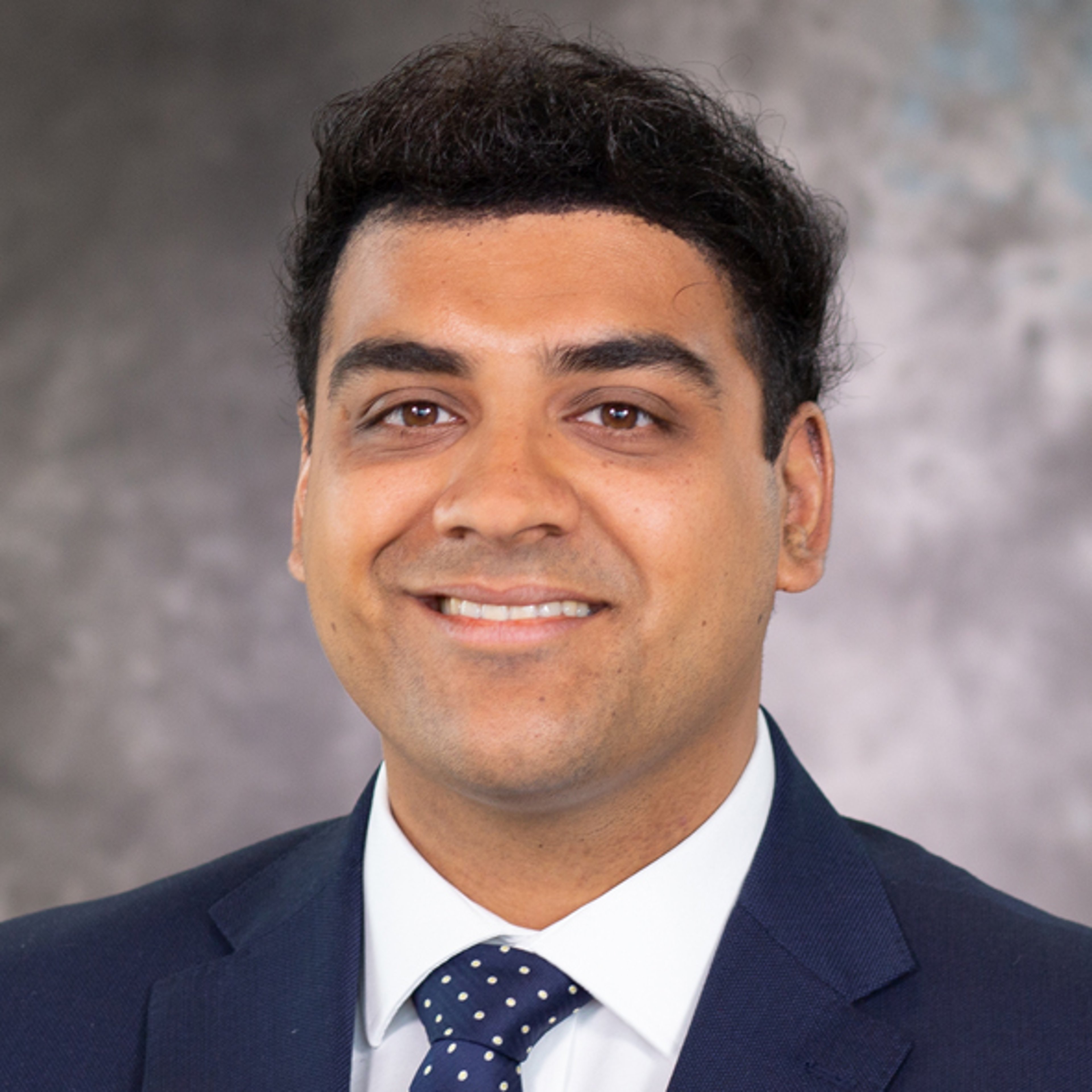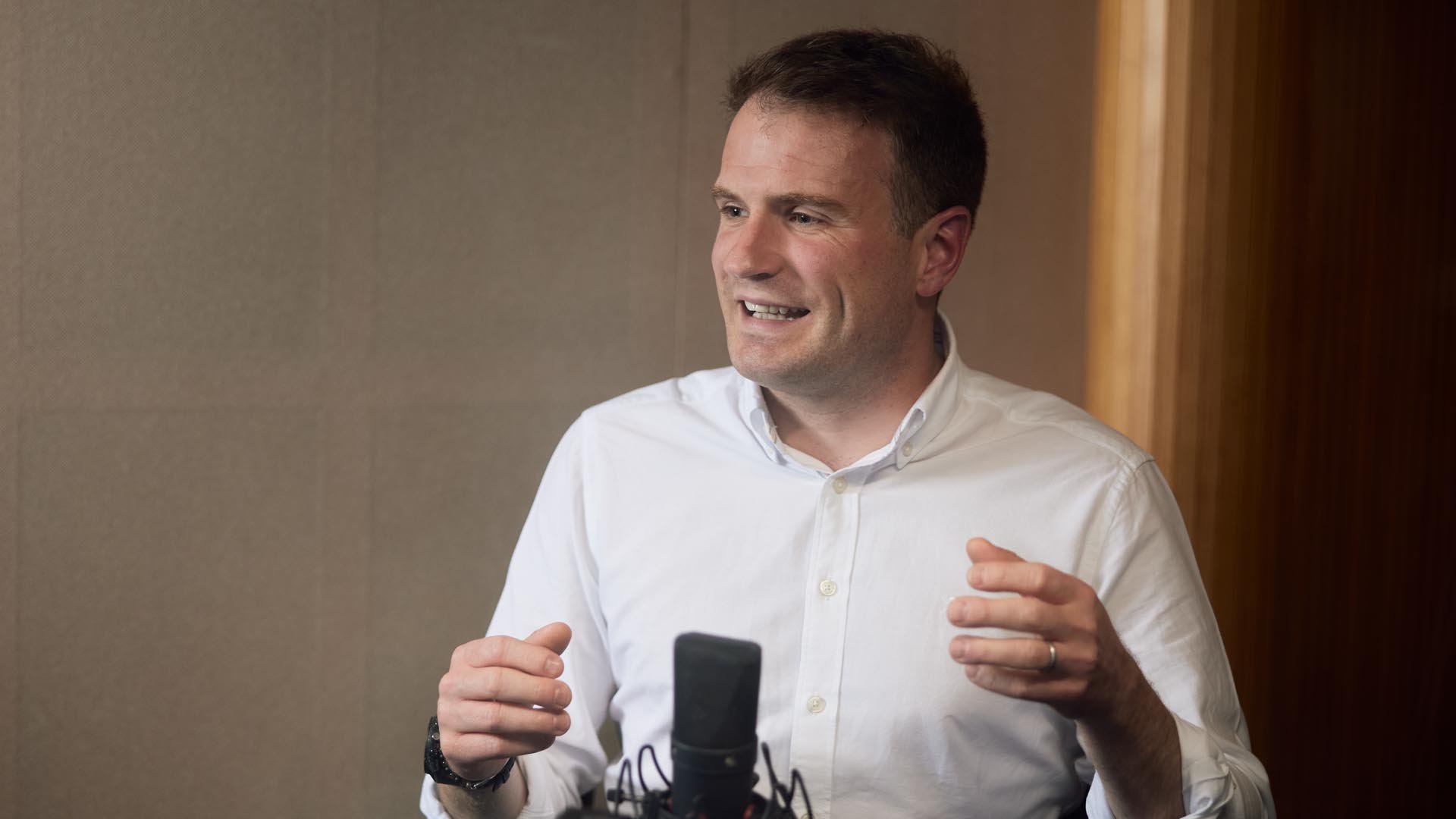
The value of an investment, and any income from it, can fall as well as rise and investors may not get back the amount invested.
Around the time Baillie Gifford was founded, the American sage Elbert Hubbard wrote: “The world is moving so fast that the person who says it can’t be done is generally interrupted by someone doing it.”
Over a century later, the truth of that insight, which has long informed the way Baillie Gifford seeks investment opportunities, is obvious to all. Like competitors in the first Olympic surfing event at Tokyo 2020, our investors see successive growth waves ahead. Like them, we dare to ride these big opportunities.
What do we mean by growth waves? As long-term investors we’re not hostage to any short-term growth index, which fails to recognise and reward strong cultures and aligned interests. In the words of Charlie Munger: “Over the long term, it’s hard for a stock to earn a much better return than the business which underlies it earns.” We would go further. It’s not about precise modelling or the search for a smooth trajectory. We want growth that reaches the heights – and stays there.
Baillie Gifford has no house view, no 'buy list' and no CIO. We believe in autonomous, open-minded analysis. Our strategy teams spur each other on through robust debate and research-sharing.

Innovation waves: stepping back
Innovation through the decades has come in a series of giant waves. So too has growth.
Joseph Schumpeter’s Capitalism, Socialism and Democracy (1942), featuring his theory of ‘creative destruction’ is one of the best guides to business cycles and long waves of innovation. He describes how, as markets are disrupted, key industry clusters have outsized effects on economic growth and development.
Earlier waves cited include the industrial evolution from British cotton mills: how steam and railways proliferated their networks and boosted urbanisation. That extended to other developments including steam, heavy engineering and electricity. The 1900s brought the Ford Model T and the assembly line which revolutionised mass production manufacturing. Then came aviation, telecoms and the internet.
All these innovations boosted growth and improved living standards. The disruptors tended to form monopolies, or at least achieve strong pricing power. The strongest players increased margins, built defensive ‘moats’, and fended off competition. Our investigations with the economist Professor Carlota Perez have reinforced these lessons, revealing the pattern of technological breakthroughs. According to this model, a small segment of the economy is upended, large companies grow to become monopolies, industries are impacted more widely, and a golden era dawns, where a wide range of industries benefit, customers reap the rewards, employment increases, social inequality improves, and the cycle starts again.
Today’s leaders are in big tech, with its dominance in search, social networks and advertising. Some businesses endure, evolve and continue to be extremely successful over time. Others will be sunk by the next big wave.
The current tech wave is multi-faceted, spanning the internet, ecommerce, artificial intelligence and digitisation across the information of things (IoT), robotics, and automation. It has implications for every industry, and wide-ranging ramifications for consumption, services, industrial, tech advancement, healthcare and arguably every segment of the market. Physical goods and services are already partly digitised and that will increase. Even with our workloads, the time to complete tasks could shift from hours to seconds.

Being creative
For us, idea generation is a multi-faceted, gradual process. We develop our thinking and insight over time and base decisions on solid foundations.
Meeting companies is essential. We have built up years of goodwill with many companies, understanding their long-term intentions, and asking the ‘what if?’ questions.
All this builds on the institutional memory we have with holdings, on some of which we have 20-50 research notes in our library. It’s about collective knowledge, not just about one meeting or one person’s view. All knowledge is connected, the trick is to make the connections.
Also important is the use of alternative sources of information. Our investors have strong relationships with over 25 academic institutions around the world. From Santa Fe and Phoenix, via Edinburgh and Oxford to Beijing. We interact with industry experts from scientists and academics or experts spanning many industries – semiconductors, healthcare and beyond. This extends to the use of inquisitive researchers, and our preference for seeing companies in their own environment, interacting with customers and suppliers. It helps shape our thinking about the businesses and the industries in which they operate.
Growth waves and our research
Baillie Gifford’s digital research library houses content from across the investment floor. By regularly dipping in, investors can access and share each other’s thoughts day-to-day, or dig deeply into a company or topic.
Two outputs in particular offer a window on our research efforts. The first is a 'quilt' infographic which summarises research work over a given timeframe. It takes all meeting notes and reports – several thousands of them – and uses word groupings to capture the content.
With these quilts, the bigger the box the more prominent the topic. It enables us to consider what we have been asking companies and what we have been getting from alternative sources and tells us what opportunities we’re focusing on.
The infographics show how four primary areas of research over the past year, but also over the past 25 years or more, have been in healthcare and pharmaceuticals, software, industrial engineering and semiconductors. The list then goes on and one can examine how other growth waves build over time, for example the rise of luxury goods, gaming and payments. On the flip side to this, we can see how others have fallen back or completely disappeared over time – oil, gas and coal for example, food, beverage and tobacco, or energy and utilities.
This presentation of the data also shows how environmental, social and governance (ESG) factors have become more integral to our work, what we discuss with companies, what issues are rising and falling in importance, and what’s coming down the track in terms of new ideas. Looking behind the headlines shows how, over the long run, we have placed an ever-larger importance on culture and management teams. Dissected over time, it allows for a fascinating ‘game’ of spot the difference and to see how our research efforts have evolved.
Figure – Research Quilt – top 30 research topics from 2020 (1,185 articles)

Figure – Research Quilt – top 30 research topics from 25 years (27,077 articles)


Over time, we will look for growth opportunities, and underpinning these irrespective of time frame is looking for disruption, significant growth or change. Let’s call this ‘D’. Then there is trust, which we will take as the first ‘T’ and that is in reference to business quality type with regards to products or services, also the management and underlying culture. Plus, also a second ‘T’ for technology. With all of these, end markets and companies’ technology is ubiquitous. It has always been there, and discovery, invention or advancement continues to inspire us in what we see in end company types.
We can also interrogate our research library using more standard index-type classifications such as MSCI sector classifications. The figure below shows the evolution of our research and helps capture the growth areas we’ve homed in on. These have evolved over time.
Figure – Research Sector 'Waves' by MSCI Sector Classifications

Examining this for the past year against the MSCI ACWI categories, gives us an insight as to how we differ in our research efforts. We will not be held hostage to the index, we want to think differently. Prominent areas include consumer discretionary, healthcare technology and industrials. We can highlight these as areas we ‘over focus’ on and in turn that leads to holdings in those areas in our client portfolios. Areas we ‘under focus’ on include financials, telecoms, basic materials and utilities.
This gives us a top-down take on all of this and one can start to unpick these and explore trends within them. One notable riser is healthcare. It has expanded in prominence and broadened to cover biotech, cancer treatments and diagnostics. The thrust of our research inquiry here has also changed to ‘what’s the opportunity?’.
Western societies tend to operate ‘sickcare’ systems, not healthcare systems. When we get ill and start to exhibit symptoms, we go to a doctor for a diagnosis and then begin treatment for those symptoms. The opportunity now is to move towards a more personalised system, where disease is detected before it has an impact and treatment is administered before symptoms present. This strategy seeks to identify the companies that can drive this revolution. We aren’t speculating on binary outcomes of trials or single products and incremental change. We want to see a cure for cancer, not a drug that extends life by three months. We want the devices and systems that will detect and prevent life-changing illness. And we want to research, uncover and back the companies leading that.
A second example is China and its rise to prominence in our research efforts. Despite making up 17 per cent of world GDP, it only comprises 5 per cent of the MSCI ACWI index. Despite the A-share market being the second largest in the world, foreigners own less than 3 per cent.
China has come a long way, but this fact is being missed by many. Looking in the rear-view mirror and making broad generalisations about geopolitical and governance risks delivered by a state owned entity-led model of exports, infrastructure and debt will miss the opportunities being delivered by an economy increasingly shifting to domestic demand, consumption, healthcare, technology and the environment. Our research within any sector or country evolves over time.
We see innovation as critical to China’s economic growth and private companies are critical to innovation. China has gone from being the ultimate copycat, low-cost manufacturer to leading in sectors that will form the infrastructure of the future. This shows in our investment research over the years, and China has featured for a very long time. At time of writing our library contained 112 notes on Tencent alone. But it isn’t the quantity but the quality of this research that matters. One of our investors’ notes from the mid-2000s captures our view:
“I’ve never looked at a company with such a broad range of outcomes. It’s possible that the business becomes worthless because a disruptive technology nullifies the network effects, or the Government changes the rules. On the other hand, with its network effects, entrenched competitive position, rising returns and monumental growth potential, this could become the most valuable internet asset in the world over the next decade.”
China offers persistent growth, a large and expanding consumer market, a continued technological upgrade and rapid digitisation. Its focus on innovation across many sectors provides a fascinating opportunity for fundamental investors. Baillie Gifford has made huge strides in researching Chinese companies, getting to know them well, and building on that relationship through our both our Edinburgh and our Shanghai presence. We expect to keep building on that. The process has helped bolster idea generation, conviction in great companies, and has led us to back what we see as being world class exceptional growth companies for the long-term.
It’s also the case within other regions. In Europe, former obsessions with telecoms companies, an Austrian brickmaker, a Swiss toilet manufacturer, Scandinavian banks et al. are distant memories. The opportunity set has changed – significantly so. Digital and tech companies are up to a third of the attractive opportunities in Europe, up from almost zero a decade ago. Some topics simply weren’t there a decade back, such as cashless payments. Others have been, gone and returned – renewables for example.

For us at Baillie Gifford, it is also about the depth of research, spanning many years and, in some instances, decades. Our digital library helps us, but we have research notes dating back much further. Atlas Copco as one of the firm’s longest standing holdings for clients one can quite easily get enthralled at looking at the eloquent notes and summaries from the 1980s, one highlighting Atlas’s strong operational growth, the high quality of its business leading to high margins and strong returns.
Being different: our growth lens
To return to where we started, our view of growth differs from that of the market. Comparing and contrasting our research focus reveals big differences in what interests and excites us.
Our approach also differs markedly from that of the index providers. We see growth investing as an art as well as a science. We look left of the decimal point and our idea of the long term starts at three-to-five years. We applaud companies for investing in themselves, focusing on the long-term. We look for world class businesses irrespective of current size, sector or industry label.
Conclusion
At Baillie Gifford we aim to combine being long-term with a willingness to be curious, patient and brave and seeking out the next big growth waves.
We think ‘what if?’ not what is. We seek to back businesses. We aim for world-class returns through long-term ownership of growth companies. We are independent thinkers and take pride in our in-depth, fundamental research. We are focused. We specialise in a handful of favoured business models. Good investment opportunities are rare. Our idea generation will evolve through the years. Like those Olympic surfers we will look to ride those successive waves of growth now just appearing on the horizon.
Risk factors
The views expressed in this article are those of Joe Faraday and Sachin Sharma and should not be considered as advice or a recommendation to buy, sell or hold a particular investment. They reflect personal opinion and should not be taken as statements of fact nor should any reliance be placed on them when making investment decisions.
This communication was produced and approved in October 2021 and has not been updated subsequently. It represents views held at the time of writing and may not reflect current thinking.
Potential for profit and loss
All investment strategies have the potential for profit and loss, your or your clients’ capital may be at risk. Past performance is not a guide to future returns.
Stock examples
Any stock examples and images used in this article are not intended to represent recommendations to buy or sell, neither is it implied that they will prove profitable in the future. It is not known whether they will feature in any future portfolio produced by us. Any individual examples will represent only a small part of the overall portfolio and are inserted purely to help illustrate our investment style.
This article contains information on investments which does not constitute independent research. Accordingly, it is not subject to the protections afforded to independent research, but is classified as advertising under Art 68 of the Financial Services Act (‘FinSA’) and Baillie Gifford and its staff may have dealt in the investments concerned.
All information is sourced from Baillie Gifford & Co and is current unless otherwise stated.
The images used in this article are for illustrative purposes only.
| 2017 | 2018 | 2019 | 2020 | 2021 | |
|---|---|---|---|---|---|
| MSCI ACWI Index | 19.3 | 10.3 | 1.9 | 11.0 | 28.0 |
| MSCI ACWI ex US Index | 20.2 | 2.3 | -0.7 | 3.4 | 24.4 |
| 1 Year | 5 Years | 10 Years | |
| MSCI ACWI Index | 28.0 | 13.8 | 12.5 |
| MSCI ACWI ex US Index | 24.4 | 9.4 | 8.0 |
Source: MSCI. The MSCI information may only be used for your internal use, may not be reproduced or disseminated in any form and may not be used as a basis for or a component of any financial instruments or products or indices. None of the MSCI information is intended to constitute investment advice or a recommendation to make (or refrain from making) any kind of investment decision and may not be relied on as such. Historical data and analysis should not be taken as an indication or guarantee of any future performance analysis, forecast or prediction. The MSCI information is provided on an 'as is' basis and the user of this information assumes the entire risk of any use made of this information. MSCI, each of its affiliates and each other person involved in or related to compiling, computing or creating any MSCI information (collectively, the 'MSCI Parties') expressly disclaims all warranties (including, without limitation, any warranties of originality, accuracy, completeness, timeliness, non-infringement, merchantability and fitness for a particular purpose) with respect to this information. Without limiting any of the foregoing, in no event shall any MSCI Party have any liability for any direct, indirect, special, incidental, punitive, consequential (including, without limitation, lost profits) or any other damages. (www.msci.com)
Past performance is not a guide to future results. Changes in the investment strategies, contributions or withdrawals may materially alter the performance and results of the portfolio. All investment strategies have the potential for profit and loss.
Important information
Baillie Gifford & Co and Baillie Gifford & Co Limited are authorised and regulated by the Financial Conduct Authority (FCA). Baillie Gifford & Co Limited is an Authorised Corporate Director of OEICs.
Baillie Gifford Overseas Limited provides investment management and advisory services to non-UK Professional/Institutional clients only. Baillie Gifford Overseas Limited is wholly owned by Baillie Gifford & Co. Baillie Gifford & Co and Baillie Gifford Overseas Limited are authorised and regulated by the FCA in the UK.
Persons resident or domiciled outside the UK should consult with their professional advisers as to whether they require any governmental or other consents in order to enable them to invest, and with their tax advisers for advice relevant to their own particular circumstances.
Financial intermediaries
This document is suitable for use of financial intermediaries. Financial intermediaries are solely responsible for any further distribution and Baillie Gifford takes no responsibility for the reliance on this document by any other person who did not receive this document directly from Baillie Gifford.
Europe
Baillie Gifford Investment Management (Europe) Limited provides investment management and advisory services to European (excluding UK) clients. It was incorporated in Ireland in May 2018 and is authorised by the Central Bank of Ireland. Through its MiFID passport, it has established Baillie Gifford Investment Management (Europe) Limited (Frankfurt Branch) to market its investment management and advisory services and distribute Baillie Gifford Worldwide Funds plc in Germany. Similarly, it has established Baillie Gifford Investment Management (Europe) Limited (Amsterdam Branch) to market its investment management and advisory services and distribute Baillie Gifford Worldwide Funds plc in The Netherlands. Baillie Gifford Investment Management (Europe) Limited also has a representative office in Zurich, Switzerland pursuant to Art. 58 of the Federal Act on Financial Institutions ('FinIA'). It does not constitute a branch and therefore does not have authority to commit Baillie Gifford Investment Management (Europe) Limited. It is the intention to ask for the authorisation by the Swiss Financial Market Supervisory Authority (FINMA) to maintain this representative office of a foreign asset manager of collective assets in Switzerland pursuant to the applicable transitional provisions of FinIA. Baillie Gifford Investment Management (Europe) Limited is a wholly owned subsidiary of Baillie Gifford Overseas Limited, which is wholly owned by Baillie Gifford & Co.
Hong Kong
Baillie Gifford Asia (Hong Kong) Limited 柏基亞洲(香港)有限公司 is wholly owned by Baillie Gifford Overseas Limited and holds a Type 1 and a Type 2 license from the Securities & Futures Commission of Hong Kong to market and distribute Baillie Gifford’s range of collective investment schemes to professional investors in Hong Kong. Baillie Gifford Asia (Hong Kong) Limited 柏基亞洲(香港)有限公司 can be contacted at Suites 2713-2715, Two International Finance Centre, 8 Finance Street, Central, Hong Kong. Telephone +852 3756 5700.
South Korea
Baillie Gifford Overseas Limited is licensed with the Financial Services Commission in South Korea as a cross border Discretionary Investment Manager and Non-discretionary Investment Adviser.
Japan
Mitsubishi UFJ Baillie Gifford Asset Management Limited ('MUBGAM') is a joint venture company between Mitsubishi UFJ Trust & Banking Corporation and Baillie Gifford Overseas Limited. MUBGAM is authorised and regulated by the Financial Conduct Authority.
Australia
Baillie Gifford Overseas Limited (ARBN 118 567 178) is registered as a foreign company under the Corporations Act 2001 (Cth) and holds Foreign Australian Financial Services Licence No 528911. This material is provided to you on the basis that you are a 'wholesale client' within the meaning of section 761G of the Corporations Act 2001 (Cth) ('Corporations Act'). Please advise Baillie Gifford Overseas Limited immediately if you are not a wholesale client. In no circumstances may this material be made available to a 'retail client' within the meaning of section 761G of the Corporations Act.
This material contains general information only. It does not take into account any person’s objectives, financial situation or needs.
South Africa
Baillie Gifford Overseas Limited is registered as a Foreign Financial Services Provider with the Financial Sector Conduct Authority in South Africa.
North America
Baillie Gifford International LLC is wholly owned by Baillie Gifford Overseas Limited; it was formed in Delaware in 2005 and is registered with the SEC. It is the legal entity through which Baillie Gifford Overseas Limited provides client service and marketing functions in North America. Baillie Gifford Overseas Limited is registered with the SEC in the United States of America.
The Manager is not resident in Canada, its head office and principal place of business is in Edinburgh, Scotland. Baillie Gifford Overseas Limited is regulated in Canada as a portfolio manager and exempt market dealer with the Ontario Securities Commission ('OSC'). Its portfolio manager licence is currently passported into Alberta, Quebec, Saskatchewan, Manitoba and Newfoundland & Labrador whereas the exempt market dealer licence is passported across all Canadian provinces and territories. Baillie Gifford International LLC is regulated by the OSC as an exempt market and its licence is passported across all Canadian provinces and territories. Baillie Gifford Investment Management (Europe) Limited ('BGE') relies on the International Investment Fund Manager Exemption in the provinces of Ontario and Quebec.
Oman
Baillie Gifford Overseas Limited ('BGO') neither has a registered business presence nor a representative office in Oman and does not undertake banking business or provide financial services in Oman. Consequently, BGO is not regulated by either the Central Bank of Oman or Oman’s Capital Market Authority. No authorization, licence or approval has been received from the Capital Market Authority of Oman or any other regulatory authority in Oman, to provide such advice or service within Oman. BGO does not solicit business in Oman and does not market, offer, sell or distribute any financial or investment products or services in Oman and no subscription to any securities, products or financial services may or will be consummated within Oman. The recipient of this material represents that it is a financial institution or a sophisticated investor (as described in Article 139 of the Executive Regulations of the Capital Market Law) and that its officers/employees have such experience in business and financial matters that they are capable of evaluating the merits and risks of investments.
Qatar
The materials contained herein are not intended to constitute an offer or provision of investment management, investment and advisory services or other financial services under the laws of Qatar. The services have not been and will not be authorised by the Qatar Financial Markets Authority, the Qatar Financial Centre Regulatory Authority or the Qatar Central Bank in accordance with their regulations or any other regulations in Qatar.
Israel
Baillie Gifford Overseas is not licensed under Israel’s Regulation of Investment Advising, Investment Marketing and Portfolio Management Law, 5755–1995 (the Advice Law) and does not carry insurance pursuant to the Advice Law. This material is only intended for those categories of Israeli residents who are qualified clients listed on the First Addendum to the Advice Law.
Ref: 14045 10003753






